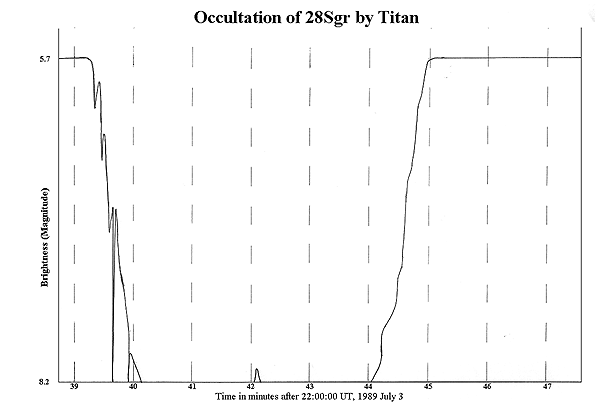Titan's Impressive Atmosphere!
Because optical light images are unable to penetrate Titan's thick
atmosphere, radio imaging studies have been critical to
unlocking the size, structure, temperature and chemical composition
of Titan.
This was done most recently by the Voyager space craft. A radio signal from Voyager was transmitted towards Earth, as the space craft passed behind Titan. Thus the signal was passing through Titan's atmosphere en-route to Earth. Analysis of the signal revealed details about the structure and depth of the atmosphere, calculated to be about 200km (125 miles) in height. Below, is a graph showing the optical brightness of a star, 28 Sgr, as it was occulted by Titan (similar to what was seen by the Voyager occultation):

Main Properties of Titan's Atmosphere
Titan's atmospheric pressure is very simlar to Earth's, just
1.6x higher. The average
molecular weight of the atmosphere is 27, consistent with either
N2 or CO. However, CO is not very stable, and other
direct measurements indicate N2 to be present. Titan's
atmosphere is perhaps 80-90% N2.
Titan has an atmosphere the most similar to Earth than any other moon or planet in the solar system!.